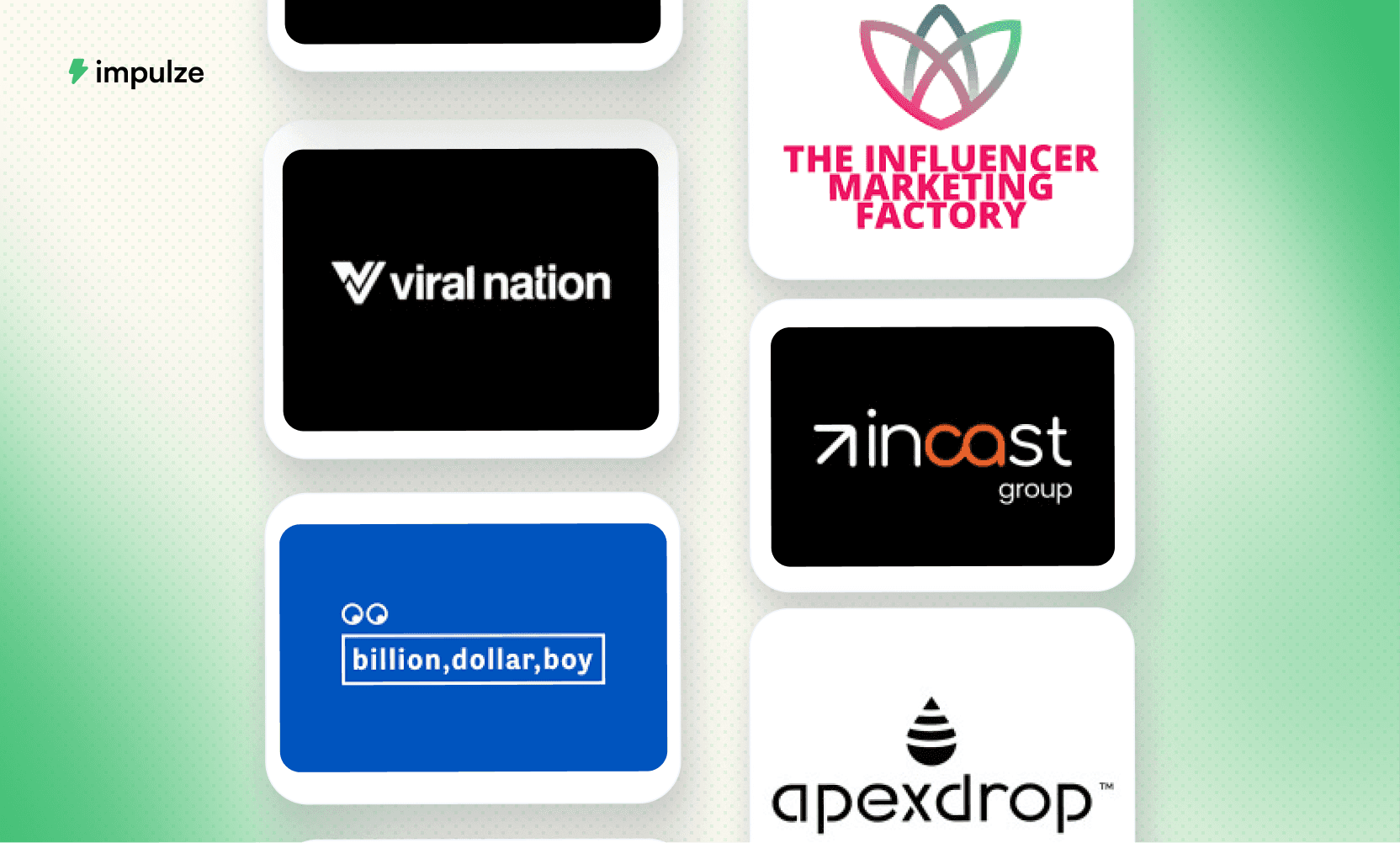🌟 今すぐアフィリエイトプログラムに参加しましょう!あなたの影響力を今日収入に変えてください — チャンスを逃さないで!
🌟 今すぐアフィリエイトプログラムに参加しましょう!あなたの影響力を今日収入に変えてください — チャンスを逃さないで!
INFLUENCER MARKETING
What Is User-Generated Content & Why Is It Important?
What Is User-Generated Content & Why Is It Important?
Mar 18, 2024
13 MIN READ



The importance of UGC is further emphasized by studies, such as the one conducted by Nosto, which revealed an increase in UGC usage by brands from 76% in 2016 to 86% in 2020. Furthermore, the expected rise in UGC marketing expenditure by 106.5% by 2024 was highlighted in a forecast by Technavio.
This increasing trend in UGC usage and expenditure by businesses clearly indicates the value and impact of user-generated content. So, what exactly is user-generated content?
That's exactly why we are here. We will discuss the definition of UGC, its forms, why it is important for businesses to incorporate it into their marketing strategies, and more.
Let's start by understanding what user-generated content is.
What Is UGC?
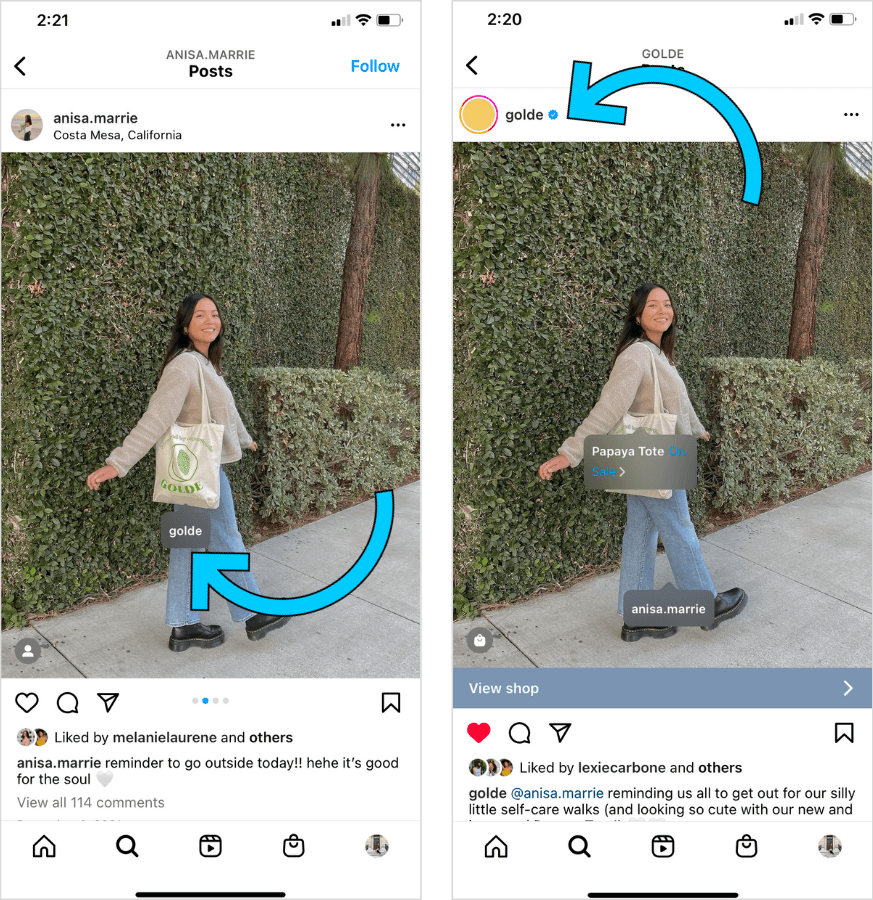
User-Generated Content (UGC) refers to any form of content that has been posted by users on social media platforms. This includes posts, comments, reviews, images, videos and more. UGC can be found on a variety of social media platforms such as Facebook, Instagram, Twitter, YouTube, and many others.
UGC differs from traditional content in many ways. Here are a few key distinctions:

Types of User-Generated Content

User-Generated Content (UGC) comes in various forms, and each type offers unique value to businesses and brands. The most common types of UGC include:
• Reviews and Ratings:
These involve customers sharing their experiences and opinions about a product or service. They are crucial for businesses as they directly influence purchasing decisions.
• Social Media Posts:
These are user-created content shared on social media platforms, like photos, videos, or status updates, often mentioning or tagging a brand or product.
• Blog Posts:
Users sometimes write in-depth reviews or share experiences on their blogs. These posts can be a valuable source of UGC and can offer detailed insights into customer experiences.
• User-Generated Videos:
These are videos created by users about a product or service. They could be unboxing videos, how-to videos, or experiential videos.
• Forum Discussions:
Online forums and communities are a rich source of UGC, where users share opinions, ask questions, and provide answers.
• Testimonials:
These are statements made by users endorsing a product or service based on their experience.
Remember, each type of UGC has its unique impact on brand visibility, credibility, and consumer trust.
Who Can Make UGC?
We all know that user-generated content comes directly from the users themselves. But for marketers, the real puzzle is who they should tap into for top-notch UGC.
Customers
Customers are the key source of UGC for brands. From captivating unboxing videos to authentic product reviews, they share your brands on TikTok and Instagram. Additionally, brands can encourage users to create and share UGC on their posts.
Brand Advocates
Your brand's most loyal followers are your brand advocates. They are genuinely dedicated to your business and love your products. It makes them the perfect creators to deliver UGC for your brand.
Employees
Invite your employees to share their experiences to elevate your brand's narrative. This content builds your brand identity and exudes authenticity. Employee-generated content (EGC) can include behind-the-scenes clips of packing and order fulfillment.

UGC Creator
A UGC creator crafts sponsored content that authentically represents a brand or product. Unlike customers, they create content for brands in return for incentives. It allows brands to exert some creative control over the UGC.
Suggested Read:Brand Ambassadors: Who Are They and What Do They Do?
Examples of UGC
Here are a few examples of successful UGC campaigns that leveraged different types of UGC to drive brand engagement:
Starbucks' #RedCupContest:
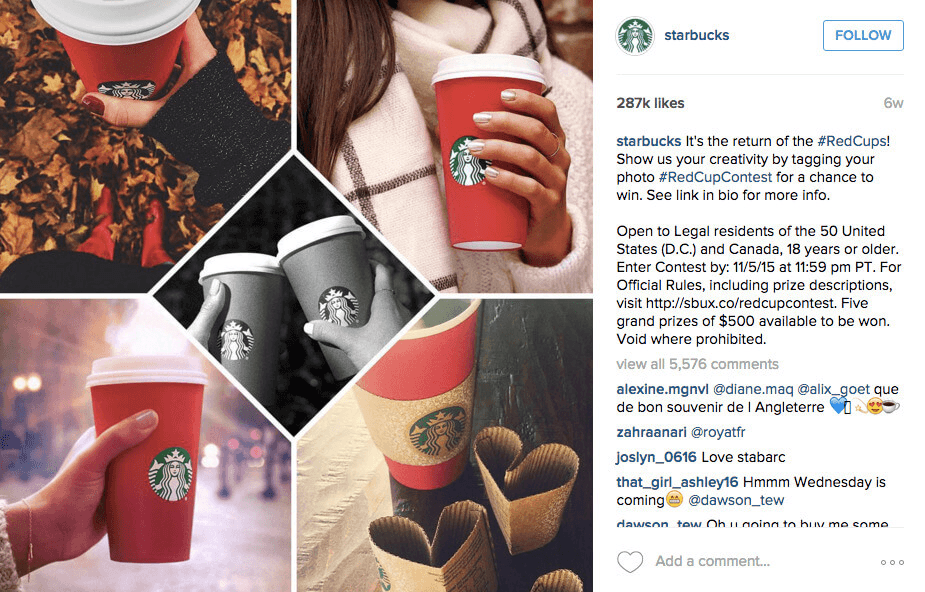
Every year, Starbucks encourages customers to submit creative photos of their holiday-themed Red Cups. The winning photos are featured on Starbucks' official social media channels, creating buzz and excitement among customers.
• GoPro's User-Generated Videos:
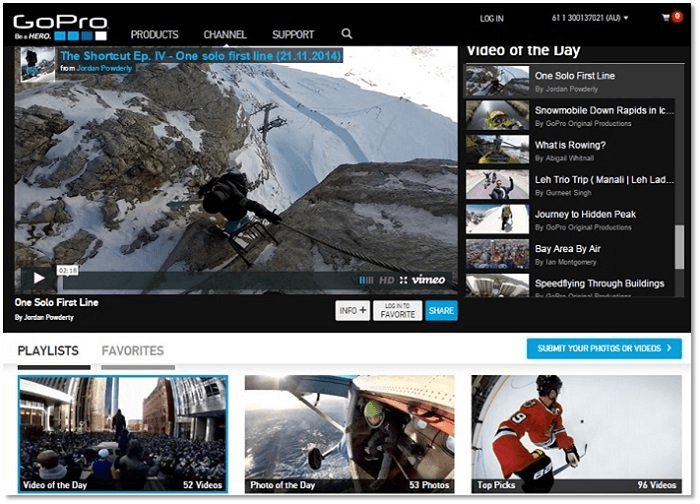
GoPro regularly features user-generated videos on their website and social media channels. These high-quality, adventure-filled videos showcase the capabilities of GoPro cameras while also celebrating the creativity and experiences of their users.
• Lush Cosmetics' Customer Reviews:
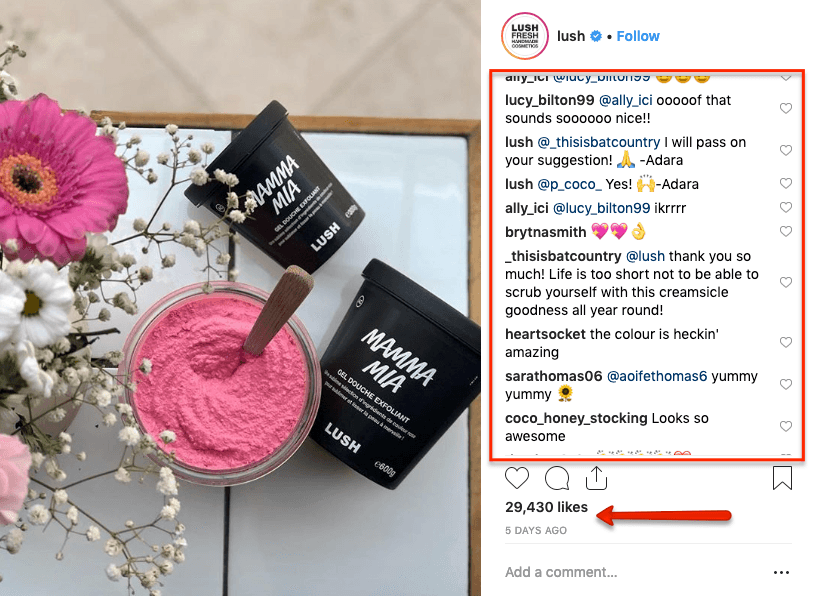
Lush Cosmetics features customer reviews and ratings prominently on their website. These authentic customer testimonials help build trust and influence purchasing decisions.
• REI's #OptOutside Campaign:
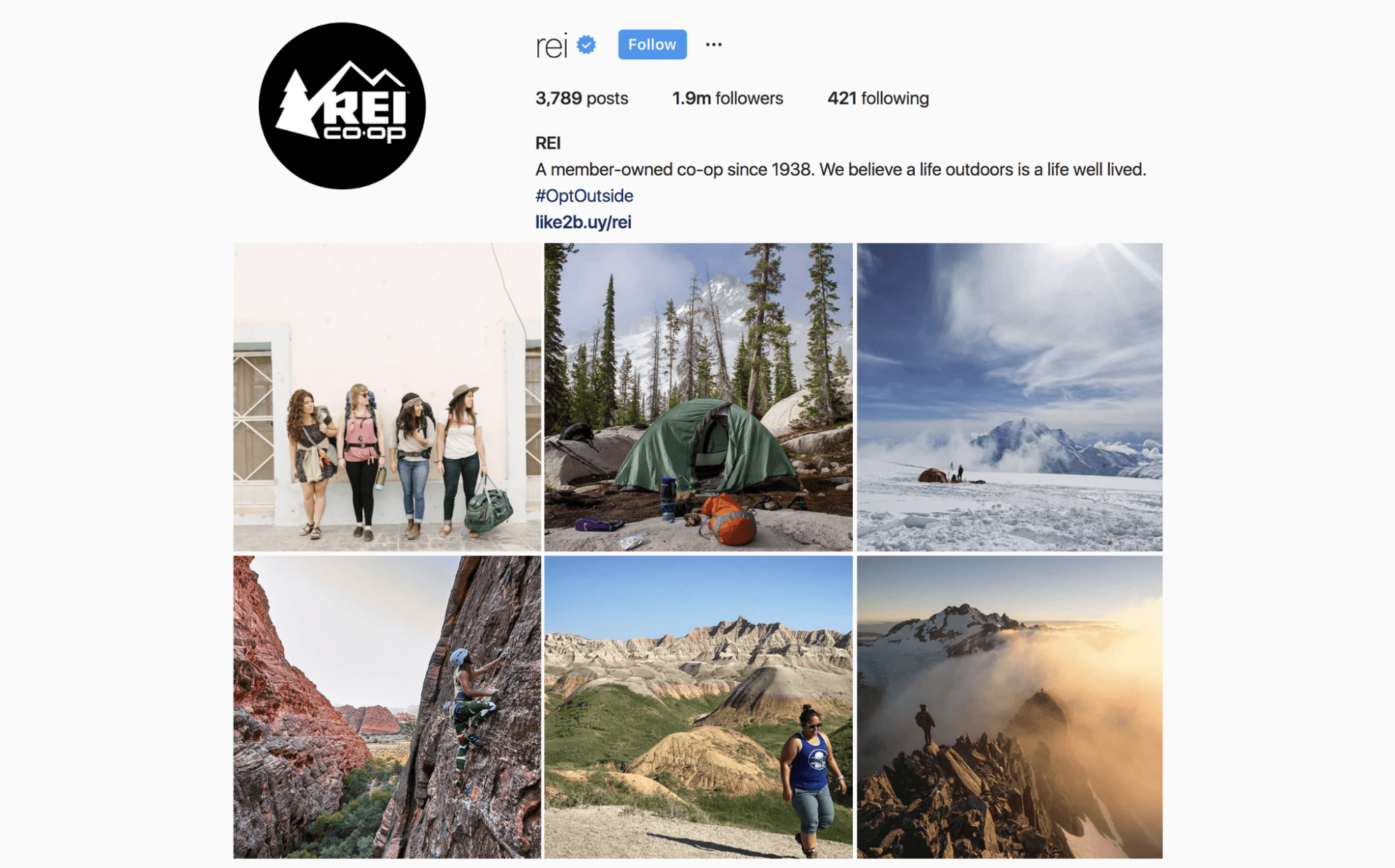
Outdoor retail company REI encourages customers to share photos of their outdoor adventures with the hashtag #OptOutside. This campaign not only promotes their brand values but also creates a community of outdoor enthusiasts.
• Airbnb's User Stories:
Airbnb features stories from hosts and travelers on their blog and social media channels. These personal stories provide valuable insights into the unique experiences Airbnb offers.
These examples illustrate how UGC can enhance brand visibility, credibility, and consumer trust. Not only that, it shows how it can drive customer engagement.
Importance of User-Generated Content
UGC has become an invaluable asset for brands, marketers, and communities for several reasons:
1. Enhanced Trust and Authenticity:
UGC is seen as more authentic than branded content, which helps to build trust with potential customers.
2. Greater Engagement:
People are more inclined to engage with content that they or their peers have created. As a result, UGC tends to generate more interactions from the audience.
3. Increased Conversion Rates:
Prospective customers often look for reviews and testimonials from other users before purchasing. And UGC can significantly influence their decision-making process.
4. Search Engine Optimization (SEO):
Fresh UGC can contribute to better search engine rankings due to the constant addition of original content.
5. Social Proof:
UGC serves as social proof, providing evidence that other customers endorse and appreciate the product or service, which can be a powerful motivator for others to follow suit.
6. Brand Loyalty and Advocacy:
Users who take the time to create content for a brand are more likely to develop a stronger connection to the brand. They often become loyal customers and brand advocates.
7. Omnichannel Approach
UGC content is not for just one social media channel. Brands can use it across different social media accounts. Moreover, they can add it to the website's landing pages and even to emails.
This helps potential customers have a genuine interest in your brand. Some brands also showcase UGC in physical stores to influence consumers' purchase decisions.
8. UGC is Cost-Effective Marketing
UGC is a cost-effective marketing approach for brands. It is even more cost-efficient than influencer marketing. On top of that, it offers an impressive ROI as it heavily influences purchase decisions.
As you can see, UGC can provide an organic and multifaceted approach to engaging customers. It can go further and help enhance brand reputation and drive business results.
How to Manage and Leverage UGC?
Effectively managing and leveraging UGC requires a strategic and methodical approach. Here are some key steps.
Encourage the Creation of UGC:
Contests/Giveaways: Run monthly themed photo contests on Instagram with a unique hashtag. Offer prizes that align with your brand, like discounts or a feature on your main page.
Questions & Polls: Use Twitter polls or Instagram Stories to ask your audience questions related to your brand or industry. Feature the most interesting responses on your profile.
Feature UGC: Regularly select user content to share on your platforms. Create a 'Fan of the Week' feature on your Facebook page to showcase and thank your community members.
Make Sharing Easy:
Guidelines & Tools: Provide a UGC submission portal on your website with clear instructions and inspirations. Include examples of outstanding UGC for reference.
Share Buttons: Integrate social share buttons on your product pages using tools like AddThis or ShareThis. This makes it easy for users to post content directly from your website.
Engage with Contributors:
Acknowledgment: Create an automated "thank you" message for UGC submissions, perhaps with a small reward like a coupon code.
Feedback Loop: Use tools like Hootsuite or Buffer to keep track of mentions and feature these posts in your stories, adding your commentary or gratitude.
Curate Content:
Social Listening: Use platforms like Mention or Brandwatch to track your brand mentions across the web and find UGC you can repurpose.
Hashtag Strategy: Develop branded hashtags for different campaigns or products and encourage their use. Monitor these tags to collect and feature UGC.
Ensure Legal Compliance:
Terms & Conditions: Publish a UGC policy on your site detailing how content can be submitted and used by your brand.
Permissions: Use direct messages to ask for permission to use UGC in your marketing. Keep records of consent for legal purposes.
Integrate UGC Across Platforms:
Product Pages: Feature customer reviews and photos on your product pages using a widget like Yotpo or Bazaarvoice.
Email & Ads: Include UGC in your newsletters and digital ads. Platforms like Mailchimp make it easy to integrate social content into email campaigns.
Highlight UGC in Campaigns:
Authentic Campaigns: Create a campaign that tells a customer's story with your product. Use video testimonials and transform them into a narrative.
Leverage for Insights:
Consumer Insights: Analyze comments and shared content with natural language processing tools like MonkeyLearn to gauge sentiment and gather feedback.
Monitor and Moderate UGC:
Moderation Policy: Establish community guidelines and communicate them clearly on your channels.
Moderation Tools: Implement moderation tools like Disqus or Community Sift to keep the content appropriate and on-brand.
Measure Impact:
Use Google Analytics and social media platform insights to track UGC performance. Look at metrics like engagement rate, reach, and click-through rate. Also use UTM parameters to track how UGC contributes to campaign goals and conversions.
Create a Community:
Build a dedicated section on your website or a group on platforms like Facebook where users can post and discuss content.
By following these strategies, brands can effectively manage and leverage UGC. This not only amplifies the brand's reach but also deepens customer engagement and loyalty.
Best Practices to Get More UGC For Your Brand
Leveraging UGC can significantly boost your brand's visibility. Here are some curated tips to elevate your UGC campaigns.
Seek Permission Before Reposting
When reposting UGC, make sure to reach out and ask for permission first. By doing so, you show appreciation for the user's content. It is also essential to ensure that they are aware of any branded hashtags of your campaign in the post.
Reposting content without permission may upset loyal customers. So, it's essential to show appreciation and respect for their content.
Credit The Creator
It is vital for brands to credit the original creator whenever they share UGC on social media. Whether through tagging them or mentioning that you are using their words, giving credit is essential.
For example, look how Fentybeauty uploads UGC and credits the creator on Instagram.

If you're sharing content across different platforms, ask for the creator's account on the platform. For instance, if you repost Instagram content on TikTok, ask for the creator's TikTok account. This gesture not only appreciates creators but also establishes trust with potential customers.
Set Strategies and Goals
Establishing a meticulously planned UGC strategy is indispensable. Define your objectives clearly if they involve improving brand visibility or sales. This targeted approach allows you to tailor UGC to achieve the social media marketing goals.
Clearly Convey What You Want
When launching a UGC campaign, be explicit about the content you seek. It will increase the content's brand alignment. Surprisingly, only 16% of brands embrace this principle. Clear guidelines facilitate the creation of content that embodies your brand's identity.
Challenges of Using UGC
UGC can be a powerful tool for brands, but it also comes with its own set of challenges and potential pitfalls. Here's a detailed look at each of these concerns and strategies to effectively manage them:
Addressing Negative UGC:
Challenges:
Negative reviews, comments, or content can spread quickly and potentially damage a brand's reputation. The brand must respond appropriately without infringing on freedom of speech or appearing defensive.
Strategies:
Proactive Monitoring: Regularly monitor mentions and content using social listening tools to quickly identify negative UGC.
Response Plan: Have a clear plan in place for responding to negative feedback that includes acknowledging the issue. Apologize if necessary and offer a solution.
Feedback Integration: View negative UGC as constructive feedback. Assess the validity of the claims and, where appropriate, integrate this feedback into business improvements.
Community Support: Build a loyal community that can act as brand advocates. Often, your community will come to your defense in the face of negative UGC.
Maintaining Brand Image and Consistency:
Challenges:
UGC can vary widely in style, tone, and quality, leading to inconsistent brand messaging. There's a risk of UGC content that is off-brand or potentially controversial, harming the brand's image.
Strategies:
Brand Guidelines: Publish clear UGC guidelines that outline what is acceptable. Also, encourage content that aligns with your brand's values and aesthetics.
Content Moderation: Set up a process for reviewing and approving UGC before it's featured or promoted to ensure it's on-brand.
Brand Storytelling: Use professional content to steer the brand narrative and intersperse UGC to complement and reinforce this narrative.
Balancing Professional Content with UGC:
Challenges:
Finding the right mix of polished, professional content and authentic UGC can be difficult. Professional content may be seen as more reliable, while UGC is viewed as more authentic, but each serves different purposes.
Strategies:
Content Curation: Curate UGC that has a higher quality or that reflects production values more closely aligned with professional content.
Co-creation Initiatives: Encourage users to create content alongside professionals.
Strategic Placement: Use professional content for brand-wide campaigns and core messaging. At the same time, leverage UGC for social proof, testimonials, and community engagement.
By tackling the challenges with the strategies we have discussed, you can leverage the full potential of UGC. It's all about finding a balance, responding appropriately, and guiding the UGC process to serve the brand's goals.
Takeaway
It's clear as day that leveraging user-generated content can be extremely beneficial for your brand. But, like every other thing, it also poses some challenges. The key to success is finding the right balance between professional content and UGC. And by utilizing them strategically to achieve your brand's goals.
Set up clear guidelines for UGC and integrate them seamlessly with your brand's storytelling. This way, you can create a powerful synergy that resonates with your audience and cultivates a loyal community.
To identify UGC creators, employ impulze.ai, the leading influencer search tool. It lets you find influencers who look like the creators your competitors are collaborating with.
Wish to discover influencers manually? Tune the filters on impulze.ai to your requirements. It will bring out the finest influencers for your brand’s UGC collaborations.
Moreover, impulze.ai helps you analyze the performance of your campaigns. Therefore, impulze.ai can be your ideal ally in your influencer marketing attempts.

The importance of UGC is further emphasized by studies, such as the one conducted by Nosto, which revealed an increase in UGC usage by brands from 76% in 2016 to 86% in 2020. Furthermore, the expected rise in UGC marketing expenditure by 106.5% by 2024 was highlighted in a forecast by Technavio.
This increasing trend in UGC usage and expenditure by businesses clearly indicates the value and impact of user-generated content. So, what exactly is user-generated content?
That's exactly why we are here. We will discuss the definition of UGC, its forms, why it is important for businesses to incorporate it into their marketing strategies, and more.
Let's start by understanding what user-generated content is.
What Is UGC?

User-Generated Content (UGC) refers to any form of content that has been posted by users on social media platforms. This includes posts, comments, reviews, images, videos and more. UGC can be found on a variety of social media platforms such as Facebook, Instagram, Twitter, YouTube, and many others.
UGC differs from traditional content in many ways. Here are a few key distinctions:

Types of User-Generated Content

User-Generated Content (UGC) comes in various forms, and each type offers unique value to businesses and brands. The most common types of UGC include:
• Reviews and Ratings:
These involve customers sharing their experiences and opinions about a product or service. They are crucial for businesses as they directly influence purchasing decisions.
• Social Media Posts:
These are user-created content shared on social media platforms, like photos, videos, or status updates, often mentioning or tagging a brand or product.
• Blog Posts:
Users sometimes write in-depth reviews or share experiences on their blogs. These posts can be a valuable source of UGC and can offer detailed insights into customer experiences.
• User-Generated Videos:
These are videos created by users about a product or service. They could be unboxing videos, how-to videos, or experiential videos.
• Forum Discussions:
Online forums and communities are a rich source of UGC, where users share opinions, ask questions, and provide answers.
• Testimonials:
These are statements made by users endorsing a product or service based on their experience.
Remember, each type of UGC has its unique impact on brand visibility, credibility, and consumer trust.
Who Can Make UGC?
We all know that user-generated content comes directly from the users themselves. But for marketers, the real puzzle is who they should tap into for top-notch UGC.
Customers
Customers are the key source of UGC for brands. From captivating unboxing videos to authentic product reviews, they share your brands on TikTok and Instagram. Additionally, brands can encourage users to create and share UGC on their posts.
Brand Advocates
Your brand's most loyal followers are your brand advocates. They are genuinely dedicated to your business and love your products. It makes them the perfect creators to deliver UGC for your brand.
Employees
Invite your employees to share their experiences to elevate your brand's narrative. This content builds your brand identity and exudes authenticity. Employee-generated content (EGC) can include behind-the-scenes clips of packing and order fulfillment.

UGC Creator
A UGC creator crafts sponsored content that authentically represents a brand or product. Unlike customers, they create content for brands in return for incentives. It allows brands to exert some creative control over the UGC.
Suggested Read:Brand Ambassadors: Who Are They and What Do They Do?
Examples of UGC
Here are a few examples of successful UGC campaigns that leveraged different types of UGC to drive brand engagement:
Starbucks' #RedCupContest:

Every year, Starbucks encourages customers to submit creative photos of their holiday-themed Red Cups. The winning photos are featured on Starbucks' official social media channels, creating buzz and excitement among customers.
• GoPro's User-Generated Videos:

GoPro regularly features user-generated videos on their website and social media channels. These high-quality, adventure-filled videos showcase the capabilities of GoPro cameras while also celebrating the creativity and experiences of their users.
• Lush Cosmetics' Customer Reviews:

Lush Cosmetics features customer reviews and ratings prominently on their website. These authentic customer testimonials help build trust and influence purchasing decisions.
• REI's #OptOutside Campaign:

Outdoor retail company REI encourages customers to share photos of their outdoor adventures with the hashtag #OptOutside. This campaign not only promotes their brand values but also creates a community of outdoor enthusiasts.
• Airbnb's User Stories:
Airbnb features stories from hosts and travelers on their blog and social media channels. These personal stories provide valuable insights into the unique experiences Airbnb offers.
These examples illustrate how UGC can enhance brand visibility, credibility, and consumer trust. Not only that, it shows how it can drive customer engagement.
Importance of User-Generated Content
UGC has become an invaluable asset for brands, marketers, and communities for several reasons:
1. Enhanced Trust and Authenticity:
UGC is seen as more authentic than branded content, which helps to build trust with potential customers.
2. Greater Engagement:
People are more inclined to engage with content that they or their peers have created. As a result, UGC tends to generate more interactions from the audience.
3. Increased Conversion Rates:
Prospective customers often look for reviews and testimonials from other users before purchasing. And UGC can significantly influence their decision-making process.
4. Search Engine Optimization (SEO):
Fresh UGC can contribute to better search engine rankings due to the constant addition of original content.
5. Social Proof:
UGC serves as social proof, providing evidence that other customers endorse and appreciate the product or service, which can be a powerful motivator for others to follow suit.
6. Brand Loyalty and Advocacy:
Users who take the time to create content for a brand are more likely to develop a stronger connection to the brand. They often become loyal customers and brand advocates.
7. Omnichannel Approach
UGC content is not for just one social media channel. Brands can use it across different social media accounts. Moreover, they can add it to the website's landing pages and even to emails.
This helps potential customers have a genuine interest in your brand. Some brands also showcase UGC in physical stores to influence consumers' purchase decisions.
8. UGC is Cost-Effective Marketing
UGC is a cost-effective marketing approach for brands. It is even more cost-efficient than influencer marketing. On top of that, it offers an impressive ROI as it heavily influences purchase decisions.
As you can see, UGC can provide an organic and multifaceted approach to engaging customers. It can go further and help enhance brand reputation and drive business results.
How to Manage and Leverage UGC?
Effectively managing and leveraging UGC requires a strategic and methodical approach. Here are some key steps.
Encourage the Creation of UGC:
Contests/Giveaways: Run monthly themed photo contests on Instagram with a unique hashtag. Offer prizes that align with your brand, like discounts or a feature on your main page.
Questions & Polls: Use Twitter polls or Instagram Stories to ask your audience questions related to your brand or industry. Feature the most interesting responses on your profile.
Feature UGC: Regularly select user content to share on your platforms. Create a 'Fan of the Week' feature on your Facebook page to showcase and thank your community members.
Make Sharing Easy:
Guidelines & Tools: Provide a UGC submission portal on your website with clear instructions and inspirations. Include examples of outstanding UGC for reference.
Share Buttons: Integrate social share buttons on your product pages using tools like AddThis or ShareThis. This makes it easy for users to post content directly from your website.
Engage with Contributors:
Acknowledgment: Create an automated "thank you" message for UGC submissions, perhaps with a small reward like a coupon code.
Feedback Loop: Use tools like Hootsuite or Buffer to keep track of mentions and feature these posts in your stories, adding your commentary or gratitude.
Curate Content:
Social Listening: Use platforms like Mention or Brandwatch to track your brand mentions across the web and find UGC you can repurpose.
Hashtag Strategy: Develop branded hashtags for different campaigns or products and encourage their use. Monitor these tags to collect and feature UGC.
Ensure Legal Compliance:
Terms & Conditions: Publish a UGC policy on your site detailing how content can be submitted and used by your brand.
Permissions: Use direct messages to ask for permission to use UGC in your marketing. Keep records of consent for legal purposes.
Integrate UGC Across Platforms:
Product Pages: Feature customer reviews and photos on your product pages using a widget like Yotpo or Bazaarvoice.
Email & Ads: Include UGC in your newsletters and digital ads. Platforms like Mailchimp make it easy to integrate social content into email campaigns.
Highlight UGC in Campaigns:
Authentic Campaigns: Create a campaign that tells a customer's story with your product. Use video testimonials and transform them into a narrative.
Leverage for Insights:
Consumer Insights: Analyze comments and shared content with natural language processing tools like MonkeyLearn to gauge sentiment and gather feedback.
Monitor and Moderate UGC:
Moderation Policy: Establish community guidelines and communicate them clearly on your channels.
Moderation Tools: Implement moderation tools like Disqus or Community Sift to keep the content appropriate and on-brand.
Measure Impact:
Use Google Analytics and social media platform insights to track UGC performance. Look at metrics like engagement rate, reach, and click-through rate. Also use UTM parameters to track how UGC contributes to campaign goals and conversions.
Create a Community:
Build a dedicated section on your website or a group on platforms like Facebook where users can post and discuss content.
By following these strategies, brands can effectively manage and leverage UGC. This not only amplifies the brand's reach but also deepens customer engagement and loyalty.
Best Practices to Get More UGC For Your Brand
Leveraging UGC can significantly boost your brand's visibility. Here are some curated tips to elevate your UGC campaigns.
Seek Permission Before Reposting
When reposting UGC, make sure to reach out and ask for permission first. By doing so, you show appreciation for the user's content. It is also essential to ensure that they are aware of any branded hashtags of your campaign in the post.
Reposting content without permission may upset loyal customers. So, it's essential to show appreciation and respect for their content.
Credit The Creator
It is vital for brands to credit the original creator whenever they share UGC on social media. Whether through tagging them or mentioning that you are using their words, giving credit is essential.
For example, look how Fentybeauty uploads UGC and credits the creator on Instagram.

If you're sharing content across different platforms, ask for the creator's account on the platform. For instance, if you repost Instagram content on TikTok, ask for the creator's TikTok account. This gesture not only appreciates creators but also establishes trust with potential customers.
Set Strategies and Goals
Establishing a meticulously planned UGC strategy is indispensable. Define your objectives clearly if they involve improving brand visibility or sales. This targeted approach allows you to tailor UGC to achieve the social media marketing goals.
Clearly Convey What You Want
When launching a UGC campaign, be explicit about the content you seek. It will increase the content's brand alignment. Surprisingly, only 16% of brands embrace this principle. Clear guidelines facilitate the creation of content that embodies your brand's identity.
Challenges of Using UGC
UGC can be a powerful tool for brands, but it also comes with its own set of challenges and potential pitfalls. Here's a detailed look at each of these concerns and strategies to effectively manage them:
Addressing Negative UGC:
Challenges:
Negative reviews, comments, or content can spread quickly and potentially damage a brand's reputation. The brand must respond appropriately without infringing on freedom of speech or appearing defensive.
Strategies:
Proactive Monitoring: Regularly monitor mentions and content using social listening tools to quickly identify negative UGC.
Response Plan: Have a clear plan in place for responding to negative feedback that includes acknowledging the issue. Apologize if necessary and offer a solution.
Feedback Integration: View negative UGC as constructive feedback. Assess the validity of the claims and, where appropriate, integrate this feedback into business improvements.
Community Support: Build a loyal community that can act as brand advocates. Often, your community will come to your defense in the face of negative UGC.
Maintaining Brand Image and Consistency:
Challenges:
UGC can vary widely in style, tone, and quality, leading to inconsistent brand messaging. There's a risk of UGC content that is off-brand or potentially controversial, harming the brand's image.
Strategies:
Brand Guidelines: Publish clear UGC guidelines that outline what is acceptable. Also, encourage content that aligns with your brand's values and aesthetics.
Content Moderation: Set up a process for reviewing and approving UGC before it's featured or promoted to ensure it's on-brand.
Brand Storytelling: Use professional content to steer the brand narrative and intersperse UGC to complement and reinforce this narrative.
Balancing Professional Content with UGC:
Challenges:
Finding the right mix of polished, professional content and authentic UGC can be difficult. Professional content may be seen as more reliable, while UGC is viewed as more authentic, but each serves different purposes.
Strategies:
Content Curation: Curate UGC that has a higher quality or that reflects production values more closely aligned with professional content.
Co-creation Initiatives: Encourage users to create content alongside professionals.
Strategic Placement: Use professional content for brand-wide campaigns and core messaging. At the same time, leverage UGC for social proof, testimonials, and community engagement.
By tackling the challenges with the strategies we have discussed, you can leverage the full potential of UGC. It's all about finding a balance, responding appropriately, and guiding the UGC process to serve the brand's goals.
Takeaway
It's clear as day that leveraging user-generated content can be extremely beneficial for your brand. But, like every other thing, it also poses some challenges. The key to success is finding the right balance between professional content and UGC. And by utilizing them strategically to achieve your brand's goals.
Set up clear guidelines for UGC and integrate them seamlessly with your brand's storytelling. This way, you can create a powerful synergy that resonates with your audience and cultivates a loyal community.
To identify UGC creators, employ impulze.ai, the leading influencer search tool. It lets you find influencers who look like the creators your competitors are collaborating with.
Wish to discover influencers manually? Tune the filters on impulze.ai to your requirements. It will bring out the finest influencers for your brand’s UGC collaborations.
Moreover, impulze.ai helps you analyze the performance of your campaigns. Therefore, impulze.ai can be your ideal ally in your influencer marketing attempts.

We Also Recommend To Read

Subscribe to our newsletter
Enter your contact details to get the latest tips and stories to help boost your business.

Subscribe to our newsletter
Enter your contact details to get the latest tips and stories to help boost your business.

Subscribe to our newsletter
Enter your contact details to get the latest tips and stories to help boost your business.

